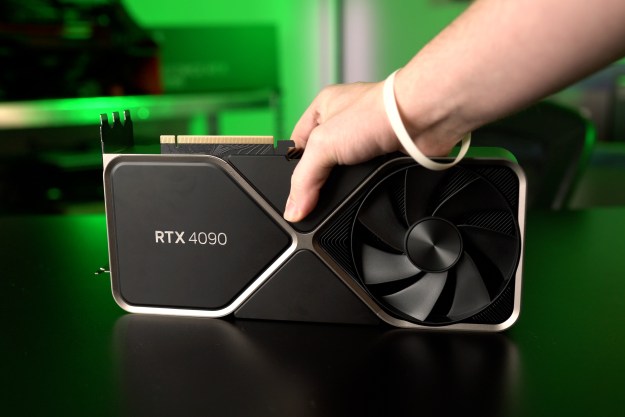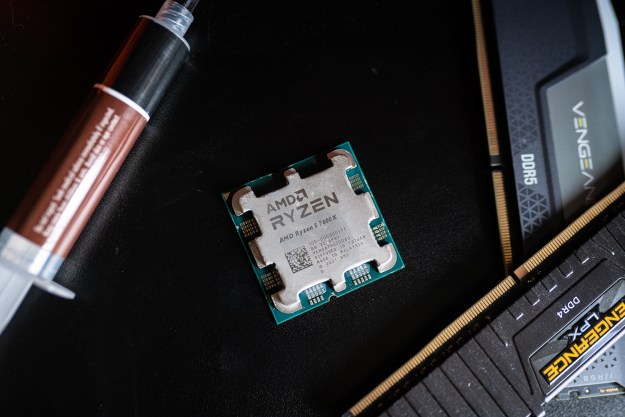Nvidia is said to be switching to TSMC’s 4N process node for its next-gen GeForce RTX 40-series graphics cards, according to a new report.
Moore’s Law Is Dead, a technology insider who has extensively reported on next-gen Nvidia and AMD GPUs, stated that “Lovelace is indeed 4nm!”

As reported by Wccftech, previous rumors indicated that Team Green would make use of TSMC’s 5nm process node, while the actual node itself will reportedly be based on the 4N process. For reference, TSMC 4N is effectively an enhanced version of the N5 (5nm) node.
With this in mind, it seems Moore’s Law Is Dead simply may have made a typo by failing to omit the “m” in his tweet. After all, Nvidia is apparently spending as much as $10 billion for its TSMC 5nm chips order.
If the aforementioned report ultimately turns out to be correct, then Nvidia’s RTX 40 boards could theoretically have an advantage over AMD’s upcoming Radeon RX 7000 GPUs, at least where process nodes are concerned.
Wccftech highlights the fact that by using 4N, Nvidia has chosen a process node that has been specifically tailored for Team Green. The benefits include improved power efficiency, the obvious jump in performance, as well as a slight density increase when compared to TSMC’s standard 5nm node.
TSMC’s 4N process node is also used by Nvidia’s data center Hopper GPUs. So why is the company using technology that has typically been reserved for other computing areas as opposed to the consumer video card market? Wccftech attributes it to the speculation surrounding RTX 40-series’ power requirements, which means the 4N process will allow Nvidia to further optimize these boards as opposed to relying on the 5nm and 6nm process nodes.
Incidentally, an earlier leak seemingly confirmed that AMD’s RX 7000 series may feature those two separate processes (TSMC 5nm and 6nm). As a result, Team Red’s next-gen GPUs could implement a multi-chip module (MCM) design.
It should be highlighted that MCM Ryzen processors ushered in a new era of innovative products in the CPU industry.
Although different from the 4N process in terms of optimization, if the 5nm and 6nm process nodes are indeed AMD’s choice, then its RDNA 3 GPUs could outperform Nvidia’s Ada boards in power efficiency.
Nvidia vs. AMD
To this end, Wccftech states that Nvidia GPUs will have a node advantage over AMD, while the latter could have the upper hand in the GPU design area.
We’ve already heard that RX 7000 graphics cards “will decimate Nvidia in efficiency across the entire lineup,” as well as the possibility of the performance upgrade for RDNA 3 possibly being higher than that of Nvidia’s Ada GPUs.
In any case, the battle of the next-gen GPU market is certainly shaping up to be an interesting one between the two technology giants. This is a golden opportunity for AMD to overtake Nvidia as the leading GPU manufacturer, but only time will tell which firm comes out on top.
Elsewhere, although next-gen RDNA 3 Navi 33 cards are expected to sport eight PCIE 5.0 lanes, Moore’s Law Is Dead hinted at the possibility of Nvidia completely forgoing PCIe 5th-gen compatibility for its RTX 40 GPUs.
As spotted by VideoCardz, the insider pointed toward a tweet from another well-known tipster, who has a noteworthy track record in terms of Nvidia hardware leaks; Kopite7Kimi outright said that Team Green has apparently opted to stick with PCIe Gen4.
PCIe 5.0 is a relatively new standard, and thus hasn’t been widely adopted yet by the technology industry, so the revelation doesn’t come as too much of a surprise. It’ll also naturally increase the costs for Nvidia. Furthermore, PCIe 4.0 is more than capable of providing enough juice for upcoming GPUs.
By and large, gamers won’t necessarily miss out on much if Nvidia’s RTX 40 cards don’t come with PCIe Gen5 support.
The flagship model of the RTX 40 lineup, the RTX 4090, has reportedly already entered its testing phase. A launch is currently scheduled for September 2022, according to reports. AMD RX 7000 boards, meanwhile, could hit the market soon after with rumors suggesting a fourth-quarter launch window.
Editors' Recommendations
- Here’s even more proof that AMD’s GPUs are in trouble
- AMD’s next-gen CPUs are much closer than we thought
- The sad reality of AMD’s next-gen GPUs comes into view
- AMD needs to fix this one problem with its next-gen GPUs
- AMD finally has a strategy to beat Nvidia’s DLSS




